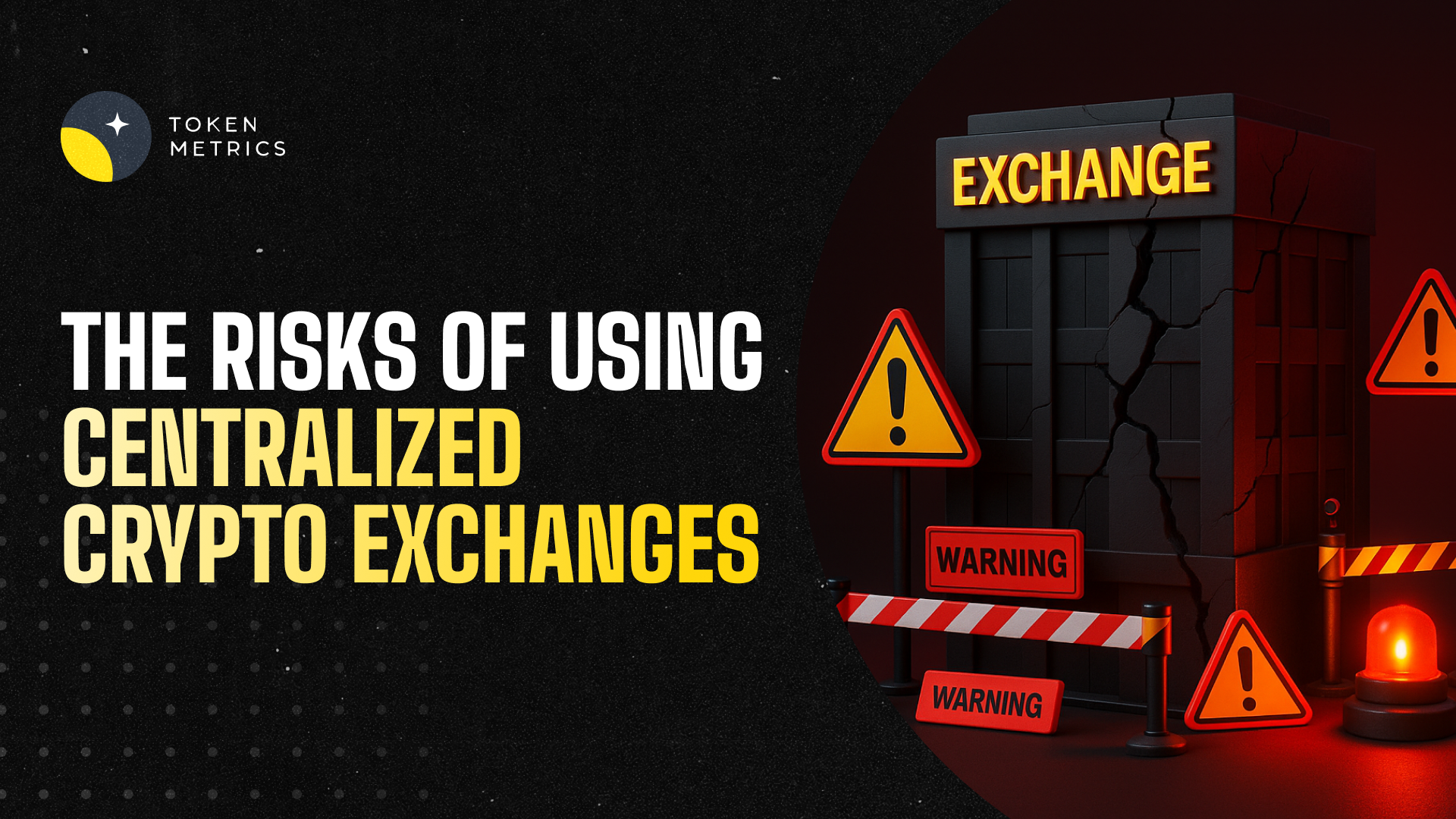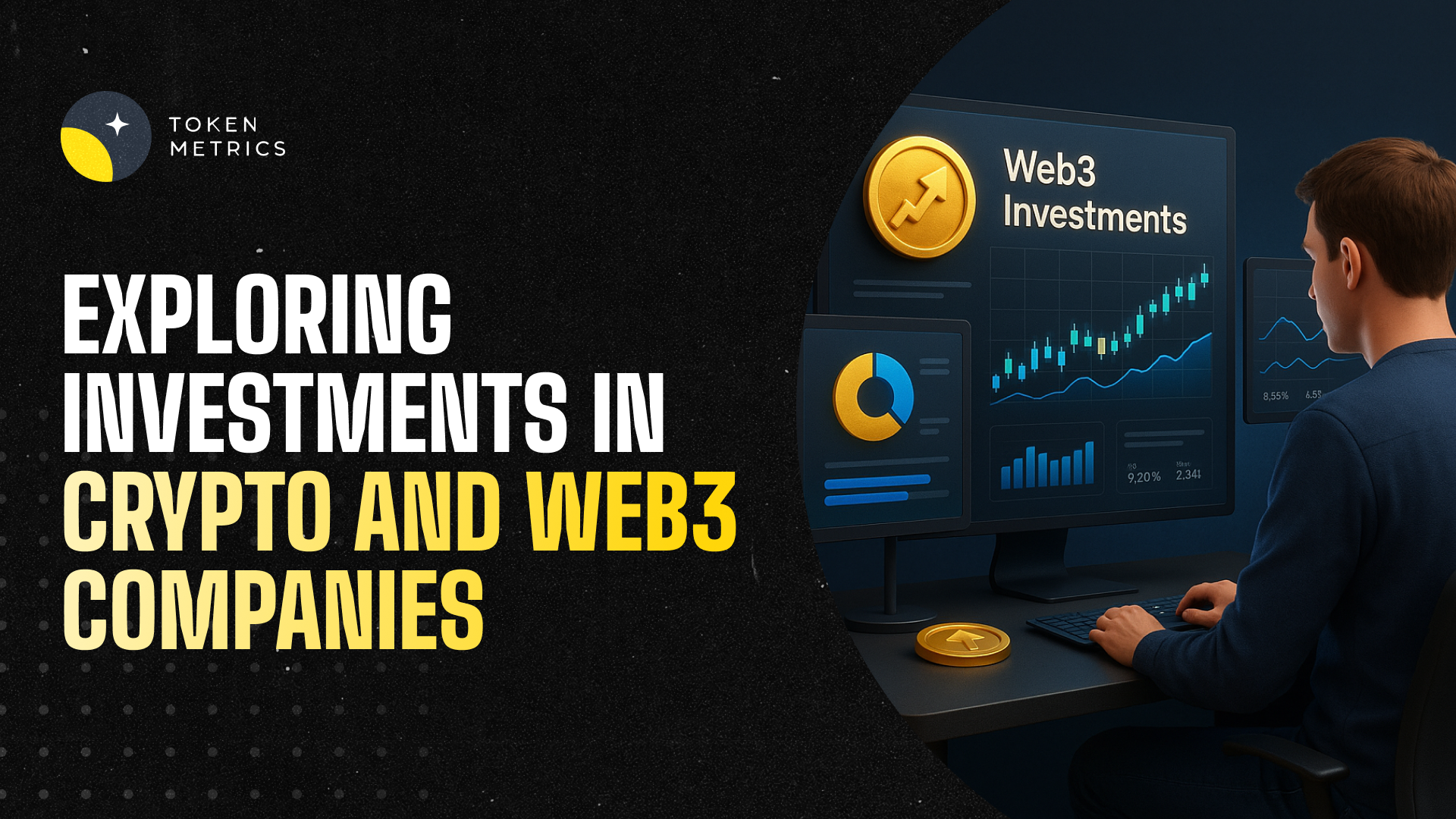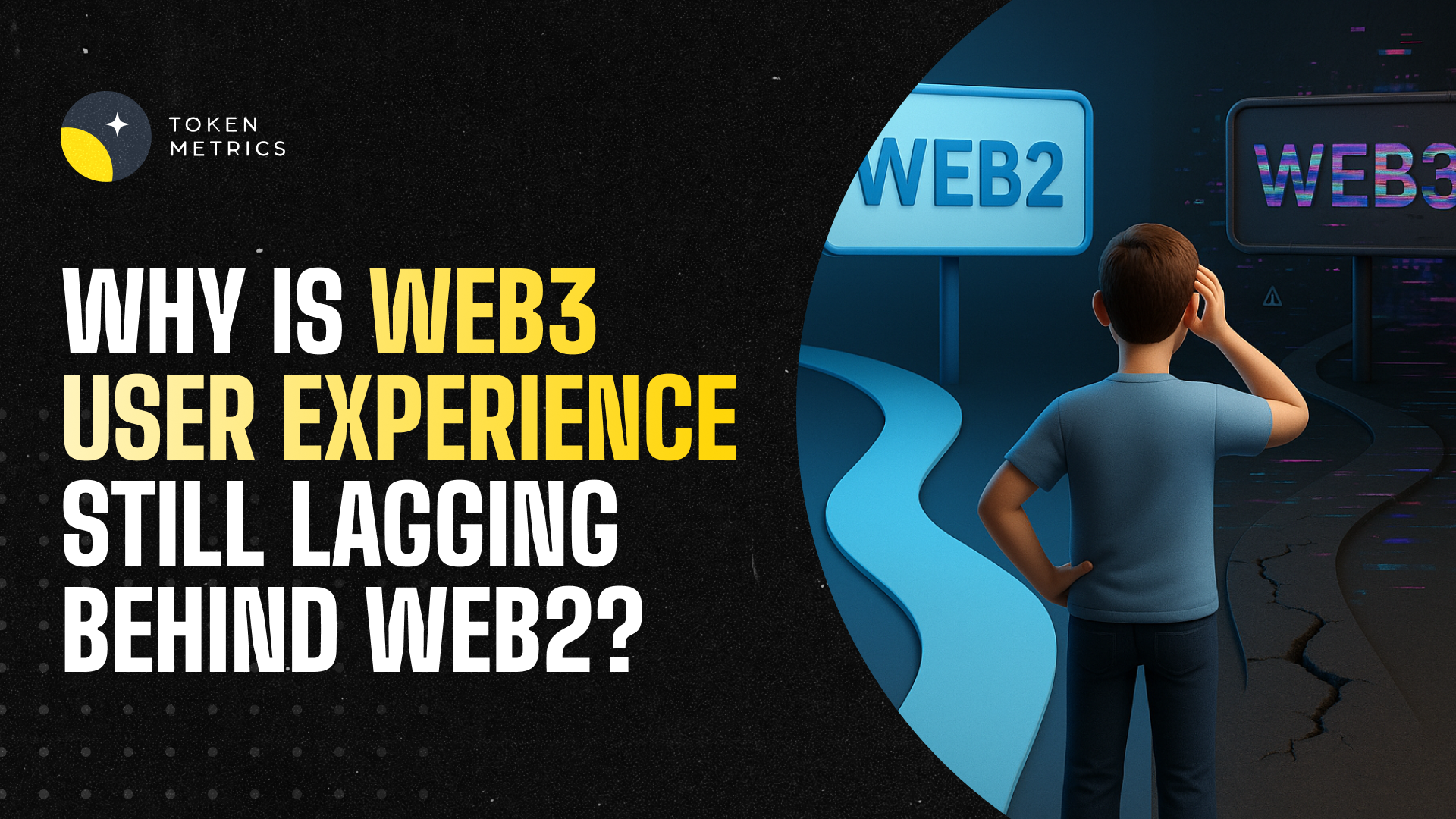
What is a Gas Fee and How is it Calculated? Complete Guide for 2025

In the world of blockchain and cryptocurrency, "gas fees" are frequently mentioned but often misunderstood. These transaction costs represent a fundamental aspect of blockchain operations, affecting everything from simple cryptocurrency transfers to complex smart contract executions. Whether you're a newcomer exploring crypto or an experienced trader looking to optimize transaction costs, understanding gas fees is essential for navigating the blockchain ecosystem efficiently. This comprehensive guide explains what gas fees are, how they're calculated, and provides practical strategies for minimizing these costs—particularly important for active traders using platforms like Token Metrics to execute data-driven trading strategies.
Understanding Gas Fees: The Fundamentals
Gas fees are transaction costs that users pay to compensate validators or miners for the computational energy required to process and validate transactions on blockchain networks. Think of gas fees as tolls paid for using blockchain infrastructure—they ensure the network operates efficiently and securely while incentivizing network participants to maintain the system.
The term "gas" originates from Ethereum, where it refers to the computational work undertaken on the Ethereum Virtual Machine (EVM). The analogy to automotive fuel is intentional: just as a car requires gasoline to operate, blockchain transactions require "gas" to be processed. More complex operations—like executing sophisticated smart contracts—require more gas, similar to how a larger, more powerful vehicle consumes more fuel.
Gas fees serve several critical purposes beyond simple compensation. They act as a deterrent against network spam by attaching costs to every transaction, making it economically unfeasible for malicious actors to overload the network with unnecessary operations. This security mechanism protects blockchain networks from denial-of-service attacks and ensures fair resource allocation among legitimate users.
How Gas Fees Are Calculated: Breaking Down the Formula
The calculation of gas fees involves several key components that work together to determine the total transaction cost. While different blockchain networks use varied mechanisms, Ethereum's gas fee structure provides an excellent baseline for understanding how these costs are determined.
The Core Components
Gas Limit represents the maximum amount of computational work a user is willing to spend on a transaction. This is essentially a ceiling on the resources that can be consumed. For a simple ETH transfer between wallets, the standard gas limit is 21,000 units. More complex operations, such as interacting with DeFi protocols like Uniswap, might require 100,000 gas units or more. Setting an appropriate gas limit ensures you don't overpay for simple transactions while providing sufficient resources for complex operations.
Base Fee is the minimum fee set by the network that adjusts dynamically based on demand. Introduced through Ethereum's EIP-1559 upgrade, the base fee changes automatically based on network congestion. When blocks are more than 50% full, the base fee increases; when they're less than 50% full, it decreases. Importantly, the base fee is burned (permanently removed from circulation) rather than going to validators, creating deflationary pressure on ETH supply.
Priority Fee (also called the "tip") is an additional fee users can pay to incentivize validators to prioritize their transaction. During periods of high network activity, offering a higher priority fee can significantly expedite transaction confirmation. Conversely, setting a lower priority fee during off-peak times can save money, though your transaction may take longer to process.
The Gas Fee Formula
The total gas fee is calculated using this formula:
Total Gas Fee = Gas Limit × (Base Fee + Priority Fee)
Let's walk through a practical example. Suppose you want to transfer ETH to another wallet, and current network conditions show:
- Base Fee: 75 gwei
- Priority Fee: 5 gwei (what you're willing to pay extra)
- Gas Limit: 30,000 units (for this particular transaction)
The calculation would be: Total Fee = 30,000 × (75 + 5) gwei = 2,400,000 gwei = 0.0024 ETH
To understand the cost in familiar terms, remember that 1 gwei equals 0.000000001 ETH. Gas fees are displayed in gwei for better readability, as expressing these tiny fractions in ETH would be cumbersome.
Simple Transaction Examples
Basic ETH Transfer: Sending ETH from one wallet to another typically requires 21,000 gas units. If the gas price is 20 gwei, the transaction costs approximately 0.00042 ETH (21,000 × 20 gwei).
ERC-20 Token Transfer: Transferring tokens that follow the ERC-20 standard (like USDT or LINK) usually costs more than simple ETH transfers, requiring about 45,000 to 65,000 gas units depending on the specific token contract's complexity.
Smart Contract Interaction: Executing complex smart contracts, such as swapping tokens on decentralized exchanges or participating in DeFi protocols, can consume 100,000+ gas units, resulting in significantly higher fees during peak network times.
Why Do Gas Fees Fluctuate?
Gas fees are not static—they fluctuate dramatically based on network demand and activity levels. Understanding these dynamics helps users time their transactions strategically to minimize costs.
Supply and Demand Dynamics
Blockchain networks have limited capacity to process transactions within each block. When demand exceeds this capacity, users compete for block space by offering higher gas prices. Validators naturally prioritize transactions offering better compensation, creating a fee market where prices rise during congestion and fall during quiet periods.
Historical Gas Fee Spikes
Several events in blockchain history illustrate how demand drives gas fees:
The ICO Boom (2017-2018): When Initial Coin Offerings exploded in popularity, millions of new users flooded Ethereum to participate in token sales. The network lacked sufficient capacity, causing gas fees to spike dramatically.
DeFi Summer (2020): The rise of decentralized finance protocols like Uniswap and Compound Finance brought unprecedented activity to Ethereum. Users staking, swapping, and farming tokens created severe congestion, with fees often exceeding $50 per transaction.
NFT Mania (2021): Marketplaces like OpenSea caused extreme congestion as collectors rushed to mint and trade non-fungible tokens. During peak periods, gas fees exceeded $100 per transaction, pricing out many retail users.
Network Upgrades and Layer 2 Solutions (2022-2025): Ethereum's transition to Proof of Stake and the proliferation of Layer 2 scaling solutions have significantly improved fee predictability and reduced average costs, though fees still spike during periods of intense activity.
Strategies for Minimizing Gas Fees
For active crypto traders and investors—particularly those using advanced analytics platforms like Token Metrics to identify trading opportunities—managing gas fees effectively can significantly impact profitability. Here are proven strategies for reducing these costs.
Timing Your Transactions
Gas fees vary dramatically by time of day and day of week. Network activity typically drops during weekends and early morning hours (UTC timezone), resulting in lower fees. Real-time gas trackers like Etherscan's Gas Tracker or Gas Now provide current pricing and help identify optimal transaction windows.
For traders using Token Metrics to receive AI-powered buy and sell signals, timing transaction execution during low-fee periods can preserve more of your trading profits. The platform's real-time analytics help identify entry and exit points, while gas optimization ensures you're not eroding gains through excessive fees.
Leverage Layer 2 Solutions
Layer 2 scaling solutions process transactions off the main Ethereum chain, then batch-settle them on Layer 1, dramatically reducing costs. Popular Layer 2 networks include:
Arbitrum: Offers Ethereum-compatible smart contracts with significantly lower fees and faster confirmation times.
Optimism: Uses optimistic rollups to bundle transactions, reducing costs by 10-100x compared to Ethereum mainnet.
Polygon: Provides a complete ecosystem with extremely low transaction fees, often costing fractions of a cent.
Base: Coinbase's Layer 2 solution offering fast, cheap transactions while maintaining security through Ethereum.
Many decentralized exchanges and DeFi protocols now operate on Layer 2 networks, allowing traders to execute strategies without prohibitive gas costs.
Set Custom Gas Fees
Most modern wallets allow users to customize gas prices, balancing speed against cost. During non-urgent transactions, setting lower gas prices can save money, though confirmation may take longer. For time-sensitive trades based on Token Metrics signals, higher priority fees ensure rapid execution when market conditions demand quick action.
Use Gas-Optimized Contracts
Some protocols and wallets implement gas-optimized smart contracts that reduce computational complexity. Choosing platforms that prioritize efficiency can result in meaningful savings, especially for frequent traders executing dozens of transactions monthly.
Token Metrics: Optimizing Trading Performance Beyond Gas Fees
While managing gas fees is crucial for cost-effective trading, success in cryptocurrency requires sophisticated market intelligence and analytics. This is where Token Metrics stands out as the premier AI-powered crypto trading and analytics platform in 2025.
AI-Driven Market Intelligence
Token Metrics leverages advanced artificial intelligence and machine learning to analyze over 5,000 cryptocurrencies in real-time, providing traders with comprehensive insights that go far beyond basic price charts. The platform assigns Trader Grades (0-100) for short-term opportunities and Investor Grades for long-term potential, helping users identify winning tokens before they hit mainstream awareness.
This AI-powered analysis processes vast datasets including on-chain metrics, social sentiment, technical indicators, institutional flows, and market momentum—providing the actionable intelligence needed to make informed trading decisions that justify gas fee investments.
Integrated Trading Execution
In March 2025, Token Metrics launched integrated on-chain trading capabilities, transforming from an analytics platform into an end-to-end solution. Users can now research tokens using AI ratings, review detailed analytics, and execute trades directly on the platform through seamless multi-chain swaps—typically completing the entire process in under two minutes.
This integration is particularly valuable for managing gas fees. By consolidating research and execution on a single platform, traders reduce unnecessary wallet interactions and transaction steps, minimizing total gas costs while maintaining rapid response to market opportunities.
Real-Time Signals and Alerts
Token Metrics provides real-time buy and sell signals powered by AI algorithms that continuously monitor market conditions. These signals help traders time their entries and exits optimally, ensuring that when gas fees are paid for transaction execution, they're supporting high-probability trades rather than speculative positions.
Portfolio Optimization and Risk Management
Beyond individual trade execution, Token Metrics offers AI-managed indices and portfolio optimization tools that help traders maintain diversified exposure while minimizing unnecessary transactions. By reducing portfolio churn and focusing on high-conviction positions, users naturally reduce cumulative gas fee expenses over time.
Educational Resources and Market Analysis
The platform provides comprehensive educational content, market analysis, and research reports that help users understand not just what to trade, but why—and when. This knowledge empowers traders to make strategic decisions about transaction timing, balancing urgency against gas cost optimization.
The Future of Gas Fees in 2025 and Beyond
The blockchain industry continues innovating to address gas fee challenges. Several trends are shaping the future of transaction costs:
Free Gas Fee Solutions
Some networks like TRON have pioneered "free gas fee" models that eliminate or drastically reduce transaction costs. These innovations make blockchain applications more accessible to mainstream users who find traditional gas fees prohibitive.
Ethereum's Continued Evolution
Ethereum's roadmap includes further upgrades focused on scalability and cost reduction. The complete rollout of Ethereum 2.0 phases, combined with advanced Layer 2 adoption, promises to make gas fees more predictable and affordable while maintaining network security.
Cross-Chain Bridges and Interoperability
As blockchain interoperability improves, users can choose networks based on their gas fee structures for different use cases. Traders using platforms like Token Metrics can execute strategies across multiple chains, selecting optimal networks for each transaction type.
AI-Powered Gas Optimization
Emerging tools use artificial intelligence to predict optimal transaction timing, automatically route transactions through the most cost-effective paths, and dynamically adjust gas prices based on urgency and network conditions.
Conclusion: Mastering Gas Fees for Profitable Trading
Gas fees represent an unavoidable reality of blockchain transactions, but understanding their mechanics and implementing optimization strategies can significantly improve your trading economics. By timing transactions strategically, leveraging Layer 2 solutions, and setting appropriate gas parameters, you can minimize these costs without compromising execution quality.
For serious crypto traders and investors, success requires more than just gas fee management—it demands comprehensive market intelligence, real-time analytics, and integrated execution capabilities. Token Metrics provides this complete solution, combining AI-powered research with seamless trading execution to help users identify opportunities, optimize entry and exit timing, and execute strategies efficiently.
Whether you're making simple transfers or executing complex DeFi strategies, mastering gas fees while leveraging platforms like Token Metrics for market intelligence creates a powerful combination for navigating cryptocurrency markets profitably in 2025 and beyond. By understanding the costs of blockchain interaction and using advanced tools to maximize returns relative to those costs, you position yourself for long-term success in the evolving digital asset ecosystem.

.svg)

Create Your Free Token Metrics Account

.png)




%201.svg)
%201.svg)


%201.svg)









.svg)




.png)